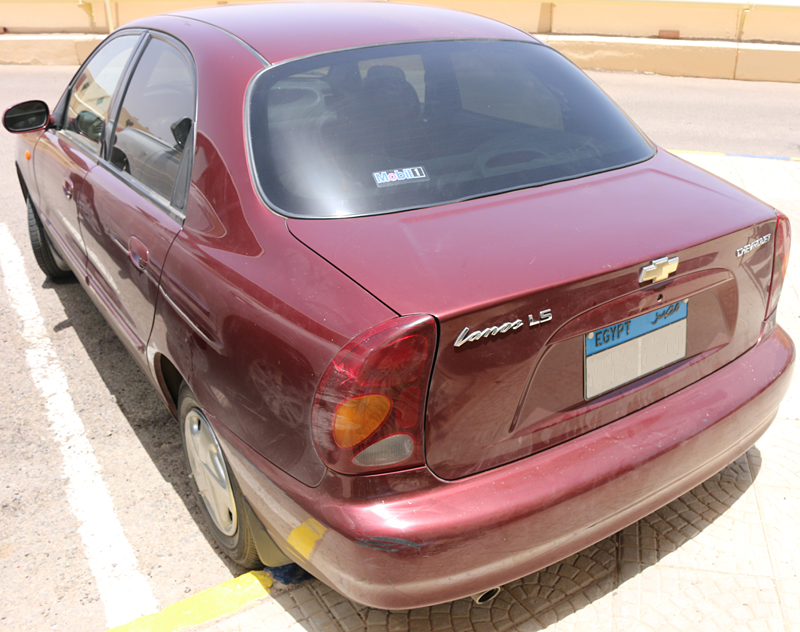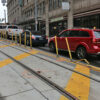Note: This article pertaining to English Nameplates on Japanese Cars: Why? was originally published on Saturday, September 16, 2017 at 10:28 in the evening and has been updated.
Of the many things to which I was looking forward on my first trip to Japan years ago was to see what the nameplates on the cars looked like in Japanese. After all, cars manufactured in Japan by Japanese automobile companies would naturally have their names in Japanese characters such as Kanji — right?
Wrong.
English Nameplates on Japanese Cars: Why?
Once I was in Japan, I saw the same names I see in the United States: Nissan. Honda. Toyota. Subaru. Kawasaki. Suzuki. Virtually no vehicle sported Japanese characters. I noticed a similar phenomenon in South Korea with the plethora of Hyundais plying the busy boulevards with the names using classic Latin letters instead of characters from the Hangul alphabet.
I thought that was odd. After all, there are people who live in Japan or South Korea who do not know or understand English. Would it not be similar to General Motors manufacturing a Chevrolet Camaro with only Japanese characters affixed to it?
The reason is part cultural and part linguistic. “Japan is as East as East gets”, according to this article written by Jason Torchinsky for Jalopnik. “A little island parenthesis right off the shore of Asia. As a result, Japan really, really appreciates the concepts and ideas they borrow from outside cultures, since there’s a sense that they’re tucked out at the end of the world. They respect outside ideas to such a degree that they want the words used in their language to maintain the character of where the orginal concepts came from.”
Shiro Nakamura of Nissan reportedly told Torchinsky that “Japanese cars will never — and he was adamant about that ‘never’ — have name badges in Japanese, only English. He explained that this was because as far as languages go, Japanese is incredibly welcoming to words borrowed from other cultures and languages.”
According to this article written by Peter Lyon for The Japan Times, English or Latin-sounding words “‘sound more exotic and culturally deeper than Japanese names, even if we don’t understand the actual meaning of the word.’ He has a point, though I think the bottom line is this: The vast majority of Japanese involved in naming products just don’t really give a hoot what a name means outside of Japan. As long as it looks cool, and captures the attention of domestic buyers, then that’s all that matters. The problem is, however, that many of the words just don’t make sense.”
Even weirder are some of the model names of the cars. Would you drive a Daihatsu Naked? Not drive the car without wearing any clothes; but the car itself, which is called the Naked? “And what about the Nissan Fuga, a V-8-powered sedan?”, asked Lyon in he aforementioned article. “In Japanese, it means ‘elegance,’ while in Italian it means ‘escape,’ two perfectly reasonable descriptions for a luxury car. In English however, it sounds like a stale mushroom.”
The Nissan Fuga is actually sold as the Infinity Q70 in the United States — so chances are that you have already driven one and did not even know it.
Interestingly, English will be the official language of Honda Motor Company, accord-ing to this article written by Hans Greimel for Automotive News. Perhaps this is a prelude to Honda piloting itself to become a more civic-minded company as a better fit in today’s world?
Final Boarding Call
The car you see in the photograph at the top of this article is a Chevrolet Lanos LS, which I rented in Cairo. It is actually manufactured by Daewoo in South Korea — meaning that I drove a South Korean car in Egypt with the name of an American motor company. As you can see, the letters are in English.
This illustrates an example of the globalization of the motor vehicle industry — and English is perhaps the best language to use to appeal to people in as many countries around the world as possible, which could be another reason for Latin letters on cars manufactured in countries where English is not the official language.
Even odder is how a similar model can have a different name. I have seen the Nissan Bluebird — first introduced in 1957 and still manufactured today — all over the world. One of the few exceptions is in the United States, where it was known under multiple names — such as the 610 and the Stanza as two examples.
The topic of this article may seem minor at best; but even though I am not a car enthusiast by any stretch of the imagination, the names and stylings of cars is one of many factors which interest me in how different — or how similar — a country which I am visiting is to the United States and to other countries; and it is but one of many parts of travel for me.
Photograph ©2015 by Brian Cohen.

